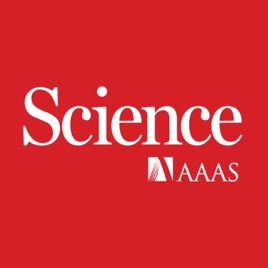
Advertise on podcast: Science Magazine Podcast
Rating
4.3 from
Categories
Country
This podcast has
100 episodes
Language
Publisher
Explicit
No
Date created
2008/01/25
Average duration
33 min.
Release period
7 days
Description
Weekly podcasts from Science Magazine, the world's leading journal of original scientific research, global news, and commentary.
Podcast episodes
Check latest episodes from Science Magazine Podcast podcast
Former pirates help study the seas, and waves in the atmosphere can drive global tsunamis
2022/06/30
On this week’s show: A boost in research ships from an unlikely source, and how the 2022 Tonga eruption shook earth, water, and air around the world
For decades, the Sea Shepherd Conservation Society caused controversy on the high seas; now it’s turning its patrolling ships into research vessels. Online News Editor David Grimm discusses how this change of heart came about with host Sarah Crespi.
Also this week, how atmospheric waves can push tsunamis around the globe. Producer Meagan Cantwell talks with Emily Brodsky, an earthquake physicist at University of California, Santa Cruz, about data from a multitude of sensors showing how waves in the air drove the fast-moving tsunamis that raced around the planet after the January Hunga eruption in Tonga.
Read the related papers:
Global fast-traveling tsunamis driven by atmospheric Lamb waves on the 2022 Tonga eruption
Atmospheric waves and global seismoacoustic observations of the January 2022 Hunga eruption, Tonga
This week’s episode was produced with help from Podigy.
[Image: NASA Earth Observatory; Music: Jeffrey Cook]
[alt: Hunga Tonga-Hunga Ha‘apai eruption as seen from space with podcast overlay]
Authors: Sarah Crespi; Meagan Cantwell; David Grimm
Episode page: https://www.science.org/content/podcast/former-pirates-help-study-seas-and-waves-atmosphere-can-drive-global-tsunamis
About the Science Podcast: https://www.science.org/content/page/about-science-podcast
See omnystudio.com/listener for privacy information.
more
Using waste to fuel airplanes, nature-based climate solutions, and a book on Indigenous conservation
2022/06/23
On this week’s show: Whether biofuels for planes will become a reality, mitigating climate change by working with nature, and the second installment of our book series on the science of food and agriculture
First this week, Science Staff Writer Robert F. Service talks with producer Meagan Cantwell about sustainable aviation fuel, a story included in Science’s special issue on climate change. Researchers have been able to develop this green gas from materials such as municipal garbage and corn stalks. Will it power air travel in the future?
Also in the special issue this week, Nathalie Seddon, a professor of biodiversity at the University of Oxford, chats with host Sarah Crespi about the value of working with nature to support the biodiversity and resilience of our ecosystems. Seddon emphasizes that nature-based solutions alone cannot stop climate change—technological approaches and behavioral changes will also need to be implemented.
Finally, we have the second installment of our series of author interviews on the science of food and agriculture. Host and science journalist Angela Saini talks to Jessica Hernandez, an Indigenous environmental scientist and author of Fresh Banana Leaves: Healing Indigenous Landscapes Through Indigenous Science. Hernandez’s book explores the failures of Western conservationism—and what we can learn about land management from Indigenous people.
This week’s episode was produced with help from Podigy.
[Image: USDA NCRS Texas; Music: Jeffrey Cook]
[alt: cows in a forest]
Authors: Meagan Cantwell; Robert Service, Sarah Crespi, Angela Saini
Episode page: https://www.science.org/doi/10.1126/science.add6320
About the Science Podcast: https://www.science.org/content/page/about-science-podcast
See omnystudio.com/listener for privacy information.
more
A look at Long Covid, and why researchers and police shouldn’t use the same DNA kits
2022/06/16
On this week’s show: Tracing the roots of Long Covid, and an argument against using the same DNA markers for suspects in law enforcement and in research labs for cell lines
Two years into the pandemic, we’re still uncertain about the impact of Long Covid on the world—and up to 20% of COVID-19 patients might be at risk. First on the podcast this week, Staff Writer Jennifer Couzin-Frankel joins host Sarah Crespi to share a snapshot of the current state of Long Covid research, particularly what researchers think are likely causes.
Also this week, Debra Mathews, assistant director for science programs in the Berman Institute of Bioethics and associate professor of genetic medicine at Johns Hopkins University, talks with Sarah about why everyone using the same DNA kits—from FBI to Interpol to research labs—is a bad idea.
Finally, in a sponsored segment from the Science/AAAS Custom Publishing Office, Sean Sanders, director and senior editor for custom publishing, interviews Bobby Soni, chief business officer at the BioInnovation Institute (BII), about what steps scientists can take to successfully commercialize their ideas. This segment is sponsored by BII.
This week’s episode was produced with help from Podigy.
[Image: A. Mastin/Science; Music: Jeffrey Cook]
[alt: illustration of potential causes for Long Covid ]
Authors: Sarah Crespi; Jennifer Couzin-Frankel
Episode page: https://www.science.org/doi/10.1126/science.add4887
About the Science Podcast: https://www.science.org/content/page/about-science-podcast
See omnystudio.com/listener for privacy information.
more
Saving the Spix’s macaw, and protecting the energy grid
2022/06/09
Two decades after it disappeared in nature, the stunning blue Spix’s macaw will be reintroduced to its forest home, and lessons learned from Texas’s major power crisis in 2021
The Spix’s macaw was first described in scientific literature in 1819—200 years later it was basically poached to extinction in the wild. Now, collectors and conservationists are working together to reintroduce captive-bred birds into their natural habitat in northeastern Brazil. Contributing Correspondent Kai Kupferschmidt discusses the recovery of this highly coveted and endangered parrot with host Sarah Crespi.
Also this week, in an interview from the AAAS annual meeting, Meagan Cantwell talks with Varun Rai, Walt and Elspth Rostow professor in the LBJ School of Public Affairs at the University of Texas, Austin, about how to prepare energy grids to weather extreme events and climate change.
This week’s episode was produced with help from Podigy.
[Image: PATRICK PLEUL/PICTURE ALLIANCE VIA GETTY IMAGES; Music: Jeffrey Cook]
[alt: two blue Spix’s macaws with podcast symbol overlay]
Authors: Sarah Crespi; Kai Kupferschmidt; Meagan Cantwell
Episode page: https://www.science.org/doi/10.1126/science.add3733
About the Science Podcast: https://www.science.org/content/page/about-science-podcast
See omnystudio.com/listener for privacy information.
more
The historic Maya’s sophisticated stargazing knowledge, and whether there is a cost to natural cloning
2022/06/02
On this week’s show: Exploring the historic Maya’s astronomical knowledge and how grasshoppers clone themselves without decreasing their fitness
First this week, Science contributing correspondent Joshua Sokol talks with producer Meagan Cantwell about the historic Maya’s sophisticated astronomical knowledge. In recent decades, researchers have set out to understand how city structures relate to astronomical phenomena and decipher ancient texts. Now, collaboration between Western scholars and living Indigenous people hopes to further illuminate the field.
Also this week, Mike Kearney, a professor at the school of biosciences at the University of Melbourne, chats with host Sarah Crespi about a species of grasshopper that can reproduce asexually. After studying the insect’s genetics, Kearney and his group didn’t find harmful mutations—or traits that made the grasshopper better adapted to its environment than the two species of grasshopper it hybridized from. Kearney and his team suggest this way of reproducing might not be rare because it’s harmful, but because most animal have safeguards in place to prevent asexual reproduction from arising.
This week’s episode was produced with help from Podigy.
[Image: Sergio Montúfar/pinceladasnocturnas.com—Estrellas Ancestrales “Astronomy in the Maya Worldview”; Music: Jeffrey Cook]
Authors: Meagan Cantwell; Joshua Sokol; Sarah Crespi
Episode page: https://www.science.org/doi/10.1126/science.add3058
About the Science Podcast: https://www.science.org/content/page/about-science-podcast
See omnystudio.com/listener for privacy information.
more
Saying farewell to Insight, connecting the microbiome and the brain, and a book on agriculture in Africa
2022/05/26
What we learned from a seismometer on Mars, why it’s so difficult to understand the relationship between our microbes and our brains, and the first in our series of books on the science of food and agriculture
First up this week, freelance space journalist Jonathan O’Callaghan joins host Sarah Crespi to discuss the retirement of NASA’s Mars InSight lander. After almost 4 years of measuring quakes on the surface of the Red Planet, the lander’s solar panels are getting too dusty to continue providing power. O'Callaghan and Crespi look back at the insights that InSight has given us about Mars’s interior, and they talk about where else in the Solar System it might make sense to place a seismometer.
Also this week, we have a special issue on the body’s microbiome beyond the gut. As part of the special issue, John Cryan, principal investigator at APC Microbiome Ireland, University College Cork, wrote a commentary piece on tightening the connections research has made between microbes and the brain—the steps needed to go from seeing connections to understanding how the microbiome might be tweaked to change what’s happening in the brain.
Finally this week, we have the first installment of our series of author interviews on the science of food and agriculture. In this inaugural segment, host and science journalist Angela Saini talks to Ousmane Badiane, an expert on agricultural policy and development in Africa, and a co-author of Food For All In Africa: Sustainable Intensification for African Farmers, a 2019 book looking at the possibilities and reality of sustainable intensive farming in Africa.
This week’s episode was produced with help from Podigy.
[Illustration: Hannah Agosta; Music: Jeffrey Cook]
[alt: overlapping drawings of microbial populations]
Authors: Sarah Crespi; Jonathan O’Callaghan; Angela Saini
Episode page: https://www.science.org/doi/10.1126/science.10.1126/science.add1406
About the Science Podcast: https://www.science.org/content/page/about-science-podcast
See omnystudio.com/listener for privacy information.
more
Seeing the Milky Way’s central black hole, and calling dolphins by their names
2022/05/19
On this week’s show: The shadow of Milky Way’s giant black hole has been seen for the first time, and bottlenose dolphins recognize each other by signature whistles—and tastes
It’s been a few years since the first image of a black hole was published—that of the supermassive black hole at the center of the M87 galaxy came about in 2019. Now, we have a similar image of the black hole at the center of the Milky Way—our very own galaxy. Staff Writer Daniel Clery joins host Sarah Crespi to discuss why these images look so much alike, even though M87’s black hole is 1600 times larger than ours. We also discuss what’s next for the telescope that captured these shots.
Also this week, we take to the seas. Bottlenose dolphins are known to have a “signature whistle” they use to announce their identity to other dolphins. This week in Science Advances, Jason Bruck and colleagues write about how they may also recognize other dolphins through another sense: taste. Jason, an assistant professor in the department of biology at Stephen F. Austin State University, talks with Sarah about what this means for dolphin minds.
In a sponsored segment from the Science/AAAS Custom Publishing Office, Sean Sanders, director and senior editor, interviews Gary Michelson, founder and co-chair of Michelson Philanthropies, about the importance of supporting research in the field of immunology—and where that support should be directed. This segment is sponsored by Michelson Philanthropies.
This week’s episode was produced with help from Podigy.
[Image: Dolphin Quest ; Music: Jeffrey Cook]
[alt: bottlenose dolphin peeking its head out of the water with podcast symbol overlay]
Authors: Sarah Crespi; Daniel Clery
Episode page: https://www.science.org/doi/10.1126/science.add0515
About the Science Podcast: https://www.science.org/content/page/about-science-podcast
See omnystudio.com/listener for privacy information.
more
Fixing fat bubbles for vaccines, and preventing pain from turning chronic
2022/05/12
On this week’s show: Lipid nanoparticles served us well as tiny taxis delivering millions of mRNA vaccines against COVID-19, but they aren’t optimized—yet, and why we might need inflammation to stop chronic pain
The messenger RNA payload of the mRNA vaccines against SARS-CoV-2 is wrapped up in little fatty packets called lipid nanoparticles (LNPs). These fat bubbles were originally designed for something much different—carrying molecules into cells to silence genes. But they were useful and we were in a hurry, so not much was changed about them when they were pressed into service against COVID-19. Science journalist Elie Dolgin talks with host Sarah Crespi about ongoing efforts to improve LNPs as a delivery system for mRNA vaccines and therapeutic treatments.
Next on the show, we hear about “pain chronification.” Have you ever thought about chronic pain? What happens in the body when it heals—no specific thing is broken—but the pain never subsides? Sarah chats with Luda Diatchenko, professor on the faculties of medicine and dentistry at McGill University, about her Science Translational Medicine paper on the need for inflammation to prevent pain chronification.
This week’s episode was produced with help from Podigy.
[Image: V. Altounian/Science; Music: Jeffrey Cook]
[alt: lipid nanoparticle illustration with podcast symbol overlay]
Authors: Sarah Crespi; Elie Dolgin
Episode page: https://www.science.org/doi/10.1126/science.adc9455
About the Science Podcast: https://www.science.org/content/page/about-science-podcast
See omnystudio.com/listener for privacy information.
more
Staking out the start of the Anthropocene, and why sunscreen is bad for coral
2022/05/05
On this week’s show: Geoscientists eye contenders for where to mark the beginning of the human-dominated geological epoch, and how sunscreen turns into photo toxin
We live in the Anthropocene: an era on our planet that is dominated by human activity to such an extent that the evidence is omnipresent in the soil, air, and even water. But how do we mark the start? Science Staff Writer Paul Voosen talks with host Sarah Crespi about how geoscientists are choosing the one place on Earth that best shows the advent of the Anthropocene, the so-called “golden spike.”
Also this week, Djordje Vuckovic, a Ph.D. candidate in the department of civil and environmental engineering at Stanford University, joins Sarah to talk about how sunscreen threatens coral reefs. Reefs are under a lot of stress these days, from things like warming waters, habitat destruction, and the loss of their fishy friends to voracious fishermen. Another suspected stressor is chemical sunscreens, which drift off swimming tourists. It turns out that common chemicals in sunscreen that protect skin from the Sun are modified by sea anemones and corals into a photo toxin that damages them when exposed to the Sun’s rays.
This week’s episode was produced with help from Podigy.
[Image: Amanda Tinoco; Music: Jeffrey Cook]
[alt: photo of healthy corals at the Great Barrier Reef in Australia with podcast symbol overlay]
Authors: Sarah Crespi; Paul Voosen
TWEET
New @ScienceMagazine Podcast:
@voooos
Djordje Vuckovic @cee_stanford
https://www.science.org/doi/10.1126/science.abq8294
This week on the @ScienceMagazine Podcast, reporter @voooos
https://www.science.org/doi/10.1126/science.abq8294
++
LINKS FOR MP3 META
Episode page: https://www.science.org/doi/10.1126/science.abq8294
About the Science Podcast:https://www.science.org/content/page/about-science-podcast
See omnystudio.com/listener for privacy information.
more
Using quantum tools to track dark matter, why rabies remains, and a book series on science and food
2022/04/28
On this week’s show: How physicists are using quantum sensors to suss out dark matter, how rabies thwarts canine vaccination campaigns, and a kickoff for our new series with authors of books on food, land management, and nutrition science
Dark matter hunters have turned to quantum sensors to find elusive subatomic particles that may exist outside physicists’ standard model. Adrian Cho, a staff writer for Science, joins host Sarah Crespi to give a tour of the latest dark matter particle candidates—and the traps that physicists are setting for them.
Next, we hear from Katie Hampson, a professor in the Institute of Biodiversity, Animal Health & Comparative Medicine at the University of Glasgow, about her work contact tracing rabies in Tanzania. Her group was able to track rabies in a population of 50,000 dogs over 14 years. The massive study gives new insight into how to stop a virus that circulates at superlow levels but keeps popping up, despite vaccine campaigns.
Finally, we launch our 2022 books series on food and agriculture. In six interviews, which will be released monthly for the rest of the year, host and science journalist Angela Saini will speak to authors of recent books on topics from Indigenous land management to foods that are going extinct. This month, Angela talks with Lenore Newman, director of the Food and Agriculture Institute at the University of the Fraser Valley, who helped select the books for the series.
This week’s episode was produced with help from Podigy.
[Image: Suzanne McNabb; Music: Jeffrey Cook]
[alt: Dogs in Tanzania with podcast symbol overlay]
Authors: Sarah Crespi; Angela Saini, Adrian Cho
Episode page: https://www.science.org/content/podcast/using-quantum-tools-track-dark-matter-why-rabies-remains-and-book-series-science-and
About the Science Podcast: https://www.science.org/content/page/about-science-podcast
See omnystudio.com/listener for privacy information.
more
Protecting birds from brightly lit buildings, and controlling robots from orbit
2022/04/21
On this week’s show: Saving birds from city lights, and helping astronauts inhabit robots
First up, Science Contributing Correspondent Josh Sokol talks with host Sarah Crespi about the millions of migrating birds killed every year when they slam into buildings—attracted by brightly lit windows. New efforts are underway to predict bird migrations and dim lights along their path, using a bird-forecasting system called .
Next, we hear from Aaron Pereira, a researcher at the German Aerospace Center (DLR) and a guest researcher at the human robot interaction lab at the European Space Agency. He chats with Sarah about his Science Robotics paper on controlling a robot on Earth from the International Space Station and the best way for an astronaut to “immerse” themselves in a rover or make themselves feel like it is an extension of their body.
In a sponsored segment from Science and the AAAS Custom Publishing Office, Sean Sanders, director and senior editor for custom publishing, interviews Alberto Pugliese, professor of medicine, microbiology, and immunology at the University of Miami, about a program he leads to advance research into type 1 diabetes. This segment is sponsored by the Helmsley Charitable Trust and nPod (the Network for Pancreatic Organ Donors with Diabetes).
This week’s episode was produced with help from Podigy.
[Image: M. Panzirsch et al., Science Robotics (2022); Music: Jeffrey Cook]
[alt: remote-controlled rover with podcast symbol overlay]
Authors: Sarah Crespi; Josh Sokol
Episode page: https://www.science.org/doi/10.1126/science.abq5907
About the Science Podcast: https://www.science.org/content/page/about-science-podcast
See omnystudio.com/listener for privacy information.
more
Desert ‘skins’ drying up, and one of the oldest Maya calendars
2022/04/14
On this week’s show: Climate change is killing critical soil organisms in arid regions, and early evidence for the Maya calendar from a site in Guatemala
Staff Writer Elizabeth Pennisi joins host Sarah Crespi to discuss how climate change is affecting “biocrust,” a thin layer of fungi, lichens, and other microbes that sits on top of desert soil, helping retain water and create nutrients for rest of the ecosystem. Recent measurements in Utah suggest the warming climate is causing a decline in the lichen component of biocrust, which is important for adding nitrogen into soils.
Next, Sarah talks with Skidmore College anthropologist Heather Hurst, who directs Guatemala’s San Bartolo-Xultun Regional Archaeological Project, and David Stuart, a professor of art history and director of the Mesoamerica Center at the University of Texas, Austin, about their new Science Advances paper. The study used radiocarbon dating to pin down the age of one of the earliest pieces of the Maya calendar. Found in an archaeological dig in San Bartolo, Guatemala, the character known as “seven deer” (which represents a day in the Maya calendar), was dated to 300 B.C.E. That early appearance challenges what researchers know about the age and origins of the Maya dating system.
This week’s episode was produced with help from Podigy.
[Image: Heather Hurst; Music: Jeffrey Cook]
[alt: Ixbalamque painting from San Barolo, Guatemala, with podcast symbol overlay]
Authors: Sarah Crespi; Liz Pennisi
Episode page: https://www.science.org/doi/10.1126/science.abq4848
About the Science Podcast:https://www.science.org/content/page/about-science-podcast
See omnystudio.com/listener for privacy information.
more
Podcast reviews
Read Science Magazine Podcast podcast reviews
mkcheshire
2011/10/14
Cell signaling
I can't believe I'm the first person to review this podcast because it is really well done. Anyone interested in cell biology and the process of commu...
more
Podcast sponsorship advertising
Start advertising on Science Magazine Podcast & sponsor relevant audience podcasts
You may also like these science Podcasts
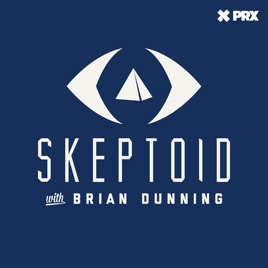
4.6
2585
937
Skeptoid
Brian Dunning
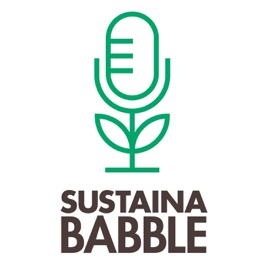
4.7
115
256
Sustainababble
Sustainababble: comedy, nature, climate change.

4.8
44
85
The Structural Engineering Podcast
Zach and Max
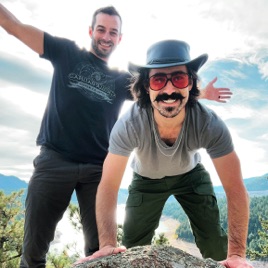
4.6
81
95
The Hifi Podcast with Darren and Duncan
Duncan Taylor, Darren Myers
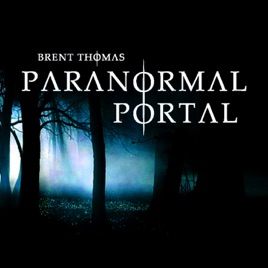
4.6
508
384
Paranormal Portal
Brent Thomas

4.7
1218
237
Bigfoot Terror in the Woods Sightings and Encounters
W.J. Sheehan
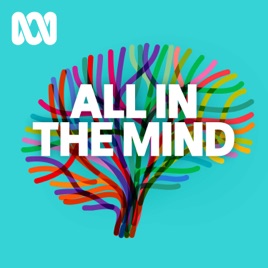
4.5
605
343
All In The Mind
ABC listen

4.8
96
220
The MapScaping Podcast - GIS, Geospatial, Remote Sensing, earth observation and digital geography
MapScaping

4.7
1325
422
Blurry Photos
David Flora

4.8
233
10
Sky Tour Astronomy Podcast
American Astronomical Society



